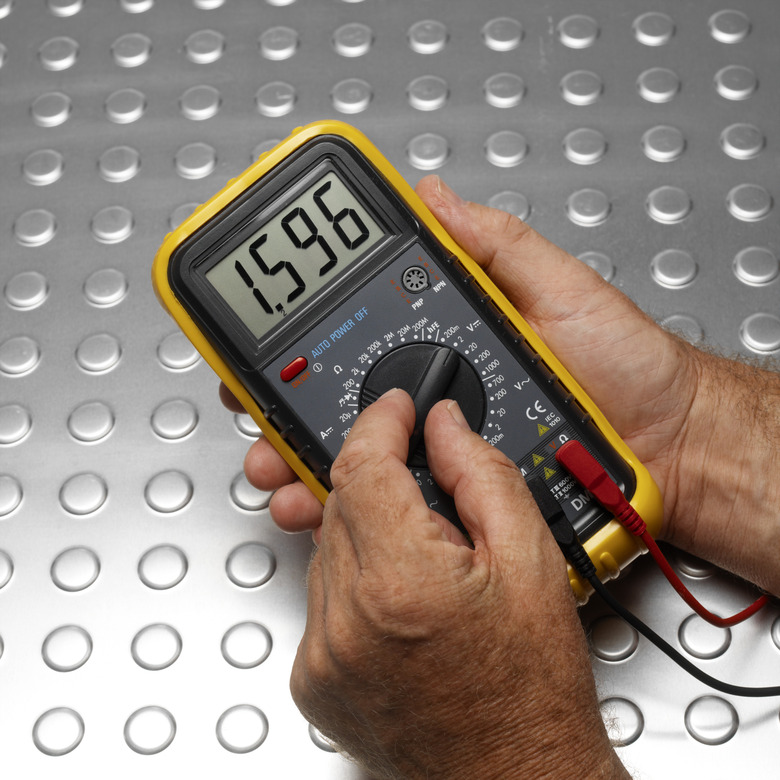Activities On Conductivity
Simple conductivity experiments demonstrate the basics of electricity in a safe and engaging way. The activities presented here rely on the use of a handheld electronic multimeter; when set to its resistance function, the meter measures conductivity in terms of electrical resistance in units of ohms — the lower the ohm value, the greater the conductivity. The meter runs on a small alkaline battery and its voltage levels are safe.
Human Skin
Your skin has conductivity that depends on moisture and salt content. Since perspiration is salty and moist, skin with perspiration will have good conductivity and lower resistance than dry skin. To measure the conductivity of skin, lightly touch the multimeter's probe tips to hands, arms and other exposed areas. Grasp one metal probe tip in each hand and see whether squeezing changes the resistance reading. See whether the distance between probe tips on the skin makes a difference in resistance readings.
Salt Water
Fill a clean glass with water, measure its conductivity by dipping the multimeter's probe tips in the water, and write down the ohm value. For best results, use distilled or deionized water, although tap water will work in a pinch. Add two grams of table salt to the water and stir until it dissolves. Measure the conductivity again and note the new ohm value. Repeat by adding another two grams of salt and noting the difference in conductivity. If you keep adding salt and measuring resistance, at some point the conductivity changes very little; the water-salt mixture cannot conduct any more electricity. To track this, you can use graph paper to make a chart showing the ohms resistance on the "Y" axis and grams of salt on the "X" axis.
Insulators and Conductors
Insulators are substances that conduct electricity very poorly; when you measure them, they have extremely high ohm values. By contrast, conductors have very low ohm values and have good electrical conductivity. Set out several common objects such as coins, paperclips, plastic items and pencils and pens. Measure them with the multimeter by touching the probes to either end of the objects and note which have poor conductivity and which conduct electricity well. Items made of metal tend to have very good conductivity; plastics, paper, glass and other non-metallic objects are typically good insulators.
Electronic Resistors
Electronic circuits use components called resistors to manage the flow of electrical current precisely. The ohm value and therefore the conductivity of a fixed resistor is precisely set and does not change. Obtain several fixed resistors and measure them with the multimeter. Note that as you do, do not let your fingers touch the bare metal probe tips, as your skin resistance interferes with an accurate measurement. Also note that the measured ohm value of the resistor may differ by a small amount from the value indicated by the colored stripes.
Cite This Article
MLA
Papiewski, John. "Activities On Conductivity" sciencing.com, https://www.sciencing.com/activities-conductivity-12856/. 24 April 2017.
APA
Papiewski, John. (2017, April 24). Activities On Conductivity. sciencing.com. Retrieved from https://www.sciencing.com/activities-conductivity-12856/
Chicago
Papiewski, John. Activities On Conductivity last modified March 24, 2022. https://www.sciencing.com/activities-conductivity-12856/
